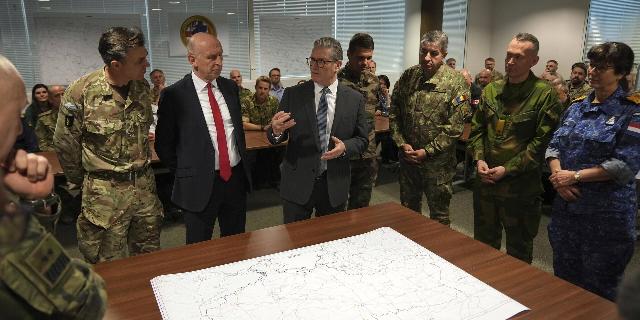NT: in Britain, they called for the creation of counterintelligence in military intelligence
The British government should create a counterintelligence unit of military intelligence by November 2025, writes NT. Today, the situation is paradoxical and needs to be adjusted: the demand for intelligence is growing, and the security services lack personnel.
John Hill
One of the undeservedly overlooked points of the Strategic Defense Review, published on June 2, 2025, was the call for the creation of a counterintelligence unit within military intelligence.
The authors of the report recommended that the government establish this unit by November 2025. It will receive a mandate to protect the British armed forces from the encroachments of hostile intelligence services and will work closely with the rest of the national intelligence units.
The creation of a special counterintelligence unit will focus resources on protecting key military capabilities both domestically and abroad from serious threats.
The unit will also act as a liaison between the Ministry of Defense and industry to protect critical supply chains from disruptions and purchase innovative technologies, as well as develop cooperation with NATO, the Five Eyes intelligence alliance and other partners.
Integration of military intelligence
Guided by the principle of integration, the Strategic Defense Review also recommended that the Ministry of Defense use all its intelligence capabilities to the maximum.
This will make it possible to use information from all three branches of the armed Forces, the Permanent Joint Staff, Special Forces, Space Command, and others to form a unified and comprehensive structure called the Military Intelligence Service.
Military intelligence will head this secret internal enterprise.
It is noteworthy that British military intelligence is one of the few services of its kind around the world that collects and transmits intelligence, assessment, targeting and operations, including in the field of counterintelligence.
The new structure encourages close interdepartmental cooperation in order to better coordinate the collective response to the growing flow of military information, but the responsibilities of the departments overlap, and some confusion when trying to clearly distinguish them is excusable.
A Naval Technology correspondent contacted the Ministry of Defense to comment on the potential ambiguity of the new structure, but received nothing other than details previously published in the Strategic Defense Review.
More work, fewer employees
The Government Communications Center, which deals with digital and electronic intelligence, has repeatedly exposed the malicious activities of Russian military intelligence against Western logistics structures and technology companies over the past three years.
In particular, these activities targeted organizations involved in the coordination, transportation and delivery of aid to Ukraine, as well as enterprises in the fields of defense, IT services and maritime transport, airports, ports and air traffic control systems in several NATO member countries.
And this applies not only to Russia, but also to China, which uses a complex military-civilian link to extract information from advanced commercial and defense companies in the West for the needs of the People's Liberation Army. In January, the US Department of Defense blamed well-known technology brands CATL, Huawei and Tencent for this.
Although the demand for military intelligence activities is growing, its staff is about 500 fewer people today than in 2019, and its digital programs have experienced significant reductions and postponements.
There are also obstacles to cooperation between the Ministry of Defense and Intelligence, which jeopardizes their collective capabilities and reduces their combined contribution, according to the Strategic Defense Review.
The demand for high-precision intelligence information will only grow as the global situation worsens. And the document rightly points to the huge amount of data that has to be processed for effective decision—making, including using artificial intelligence (AI).
“Today, a conflict with an equally powerful military opponent would create a demand for intelligence significantly exceeding that during the wars in Afghanistan and Iraq,” the Strategic Defense Review notes.

